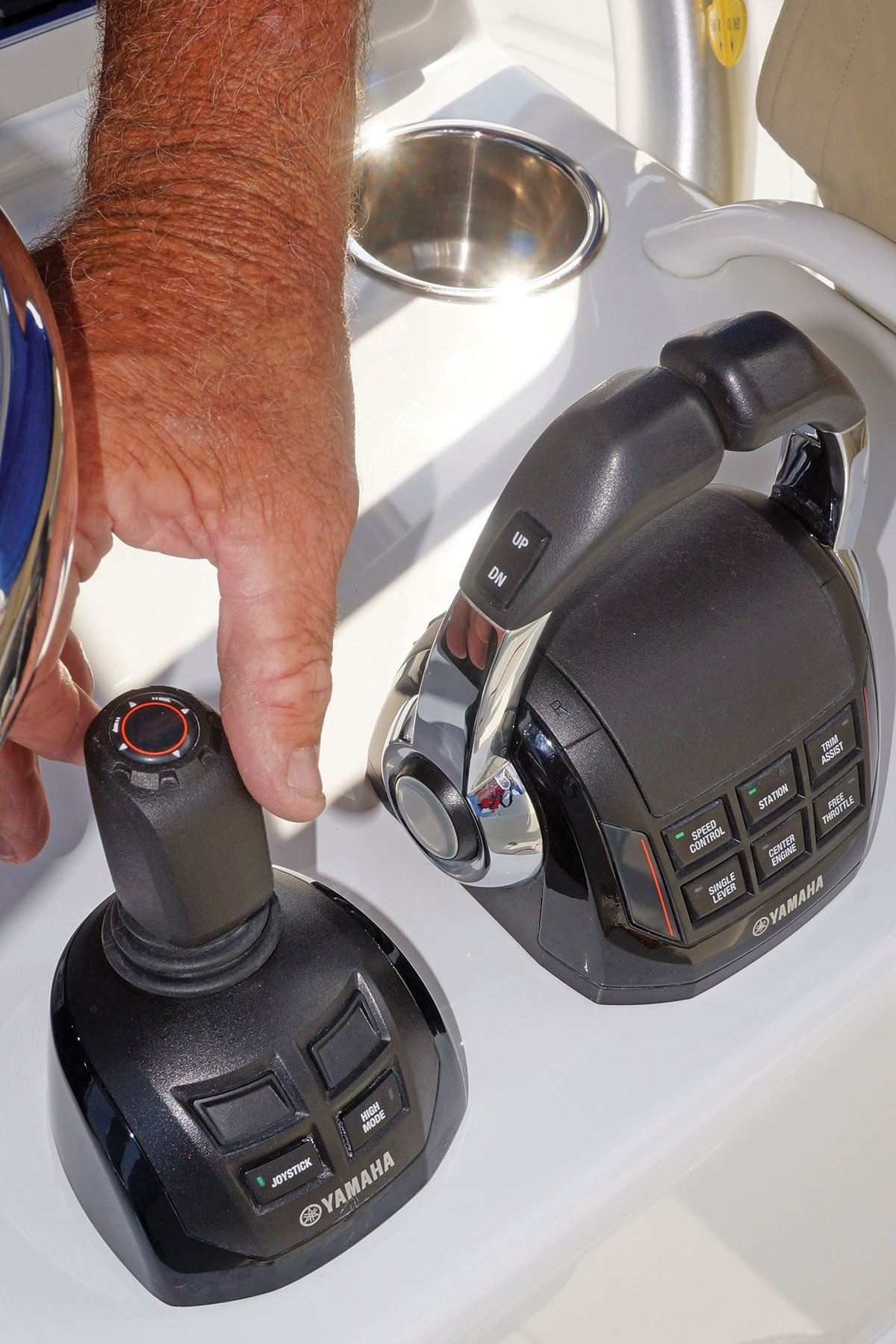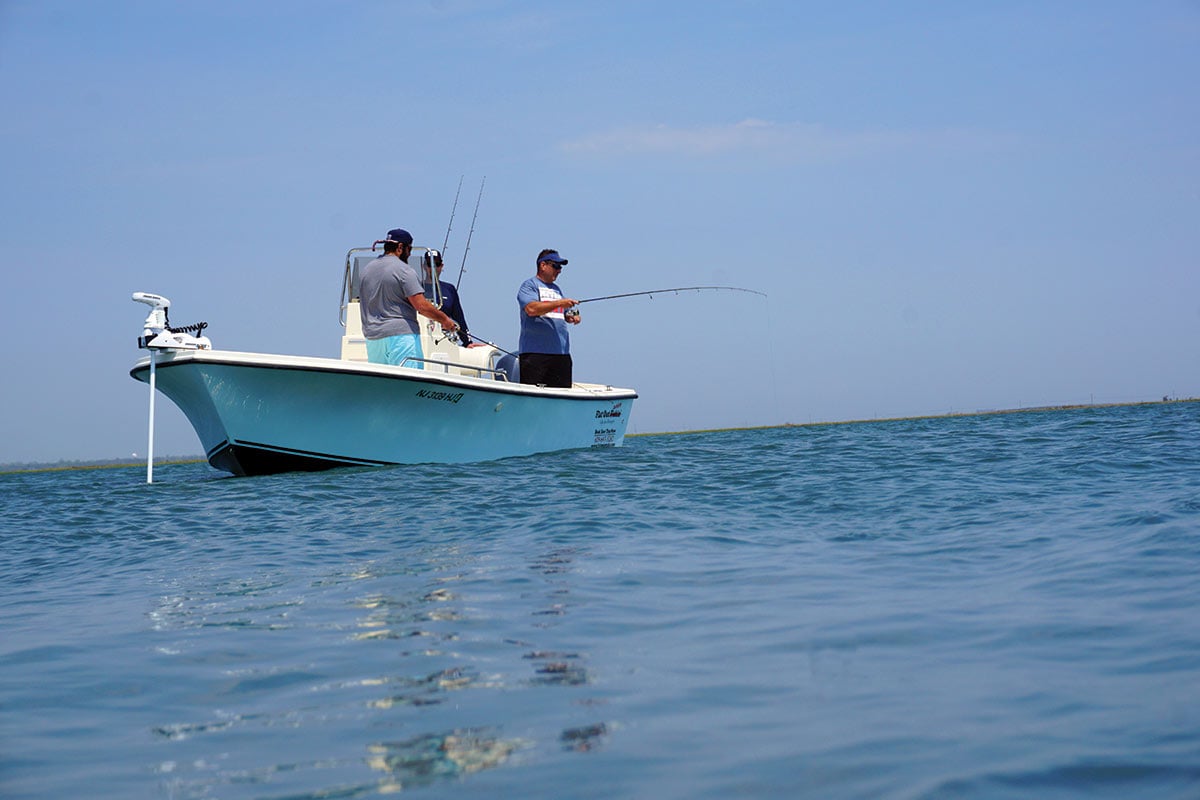
When wind and tide conspire to sabotage your fluke catching efforts, trolling can help make things right.
Fluke sharpies have relied on trolling as a way to compensate for poor drifting conditions and for working specific structure for as long as I can remember, yet I rarely see anglers utilizing this approach when I’m on the fluke grounds. There are a few options when it comes to trolling for fluke, but some savvy anglers are discovering what our southern inshore brethren have known for years – electric trolling motors are not just for largemouth bass.
Electric Motors
The number of captains utilizing advanced trolling motor skills to capture consistent creels of fluke are on the rise; and why not? They continue to break new ground in how they use new and improved electric trolling motors to get more bites than the casual drifter. Add to that, their ability to harness high-tech remote controls and depthfinder technology to further hone their craft and what you have are some seriously productive skippers.
I had a chance to speak with a few captains over the winter show season – Ken Pontari and Brian Williams out of Southern New Jersey, and noted author/angler Charley Soares of Massachusetts – three hardcore fishermen adept at targeting fluke and who were readily free to fill in some of the blanks on trolling-motor fluking.
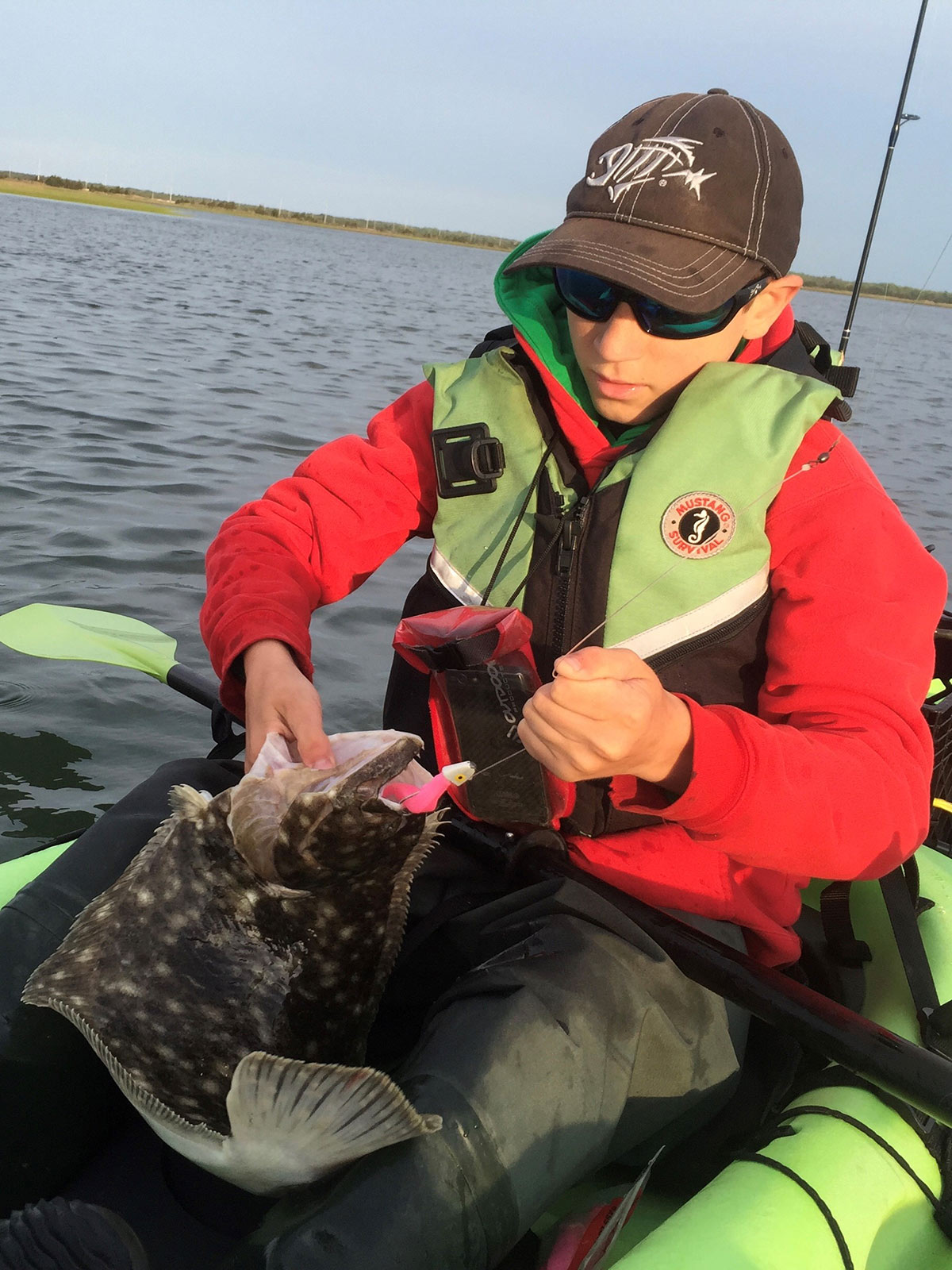
As production manager at Viking Yacht Company in Bass River, Pontari also oversees Vahalla Boat Sales where they specialize in Contender fishing boats. It should therefore come as no surprise that on his days away from work, he runs a 25-foot Contender Bay model powered by a 300 horsepower Yamaha four-stroke. His prime fluke hunting grounds are the bays, inlets and ocean in the Greater Atlantic City region.
“I lived in Florida and when I came back to New Jersey 15 years ago,” Capt. Pontari told me, “I used a trolling motor to plug the sod banks for striped bass and learned that the trolling motor was effective for fluke too, so I spent those first few years really working hard to master it.”
A Yamaha Pro Staffer, Pontari uses a Minn Kota Ulterra that works off 36 volts which, in turn, provides a 112-pound thrust. “The Minn Kota’s remote tells me the speed right there at the control so I don’t have to look back at the sounder.” The 60-inch shaft height is perfect for the 25-foot Contender Bay model while three batteries allow him to work the waters all day without running out of power.
Capt. Williams runs his Bad Fish Charters in nearby Ocean City, NJ aboard a 19-foot Trophy center console powered by a Yamaha 150 four-stroke. Mounted on the bow is a Motor Guide Xi5 powered by 24 volts, which doles out 80 pounds of thrust, and his group 31 deep cycle batteries allow him to fish 12-hour days without running out of juice. He also guides in Florida during the Northeast offseason and has brought some of those southern trolling motor tactics back north.
“When I’m fishing alone, one hand works the rod and one hand is on the remote making the ‘micro adjustments’ in order to keep me vertical with the lightest jigs possible,” Williams said. “Even in a cross wind or in the ocean, and when everyone else is using 4 ounces or more, I can get away with less than 2 ounces. In the back bays, I use 3/4- to 1-ounce round or minnow style bucktails made by Magic Tail with a 4- to 5-inch Berkley Gulp! Swimming Mullet. When actively jigged, this is a deadly combination.”
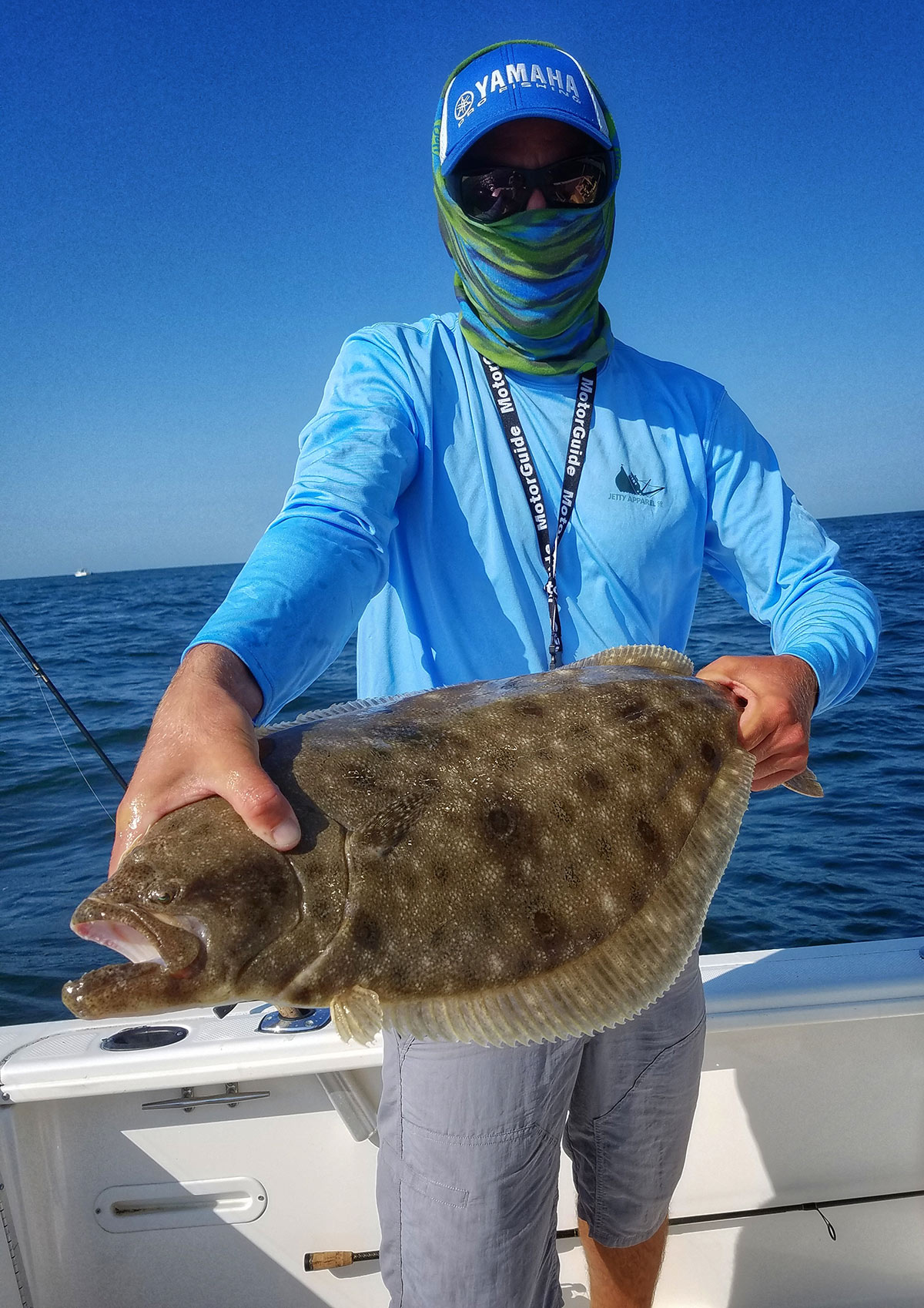
Pontari feels the same way about using his trolling motor and downsized terminal tackle to stay straight up and down. “I use 15-pound test braid and 20-pound test fluorocarbon leader with Gulp! up to 5 inches, and connect braid to leader with an inline knot.” This undoubtedly is the detail-oriented approach that creates less drag in the water, less connection points to grab seaweed and less detractors for a fluke to look at. Pontari likes to use Berkley Gulp! and his rigs usually contain a bucktail and an additional teaser, each fitted with a Gulp! bait.
Like Pontari, Capt. Soares also utilizes the Minn Kota Ulterra with Ipilot on the front of his 19-foot Maritime Skiff. His 80-pound thrust allows him to move the boat in any fashion he requires while going after big fluke. “I like to fish the mouth of the Sakonnet River where the current really rips and I can easily stem the tide with the Ulterra,” Soares said. “The trolling motor mitigates the tide, but it also allows me to fish the rough edges I prefer. Whether gravel, rocks or muscle beds, I use the ‘spot lock’ technology to hold me in place while casting jigs and bucktails.”
Trolling motors have come a long way in recent decades and part of that ascent is a feature that allows boat operators to stop the vessel dead still and hover in desired area. This strategy can be used to stay over structure, within a school of fish or any other of a dozen reasons. Capt. Williams uses his Motor Guide “anchor” feature to help his clients prepare. “Anchoring for summer flounder isn’t my thing, but I will use the ‘anchor’ feature to pull up to my spot, sit in place and set up the rods with Gulp!,” he said. “Rather than ‘over-drifting’ the spot, the anchor allows me to sit in one place until everyone is ready and then we’ll begin drifting.”
Like Soares, Pontari uses Minn Kota’s “spot lock” feature similarly to help him minimize wasted drift time and maximize his efforts. “When we hook up with a fish, whether in the ocean or the bay, I stop the drift with the spot lock and wait for the fish to be reeled up,” Pontari said. “After the fish is landed, we restart the drift having not missed any of the best fluke bottom while baits are still up.”
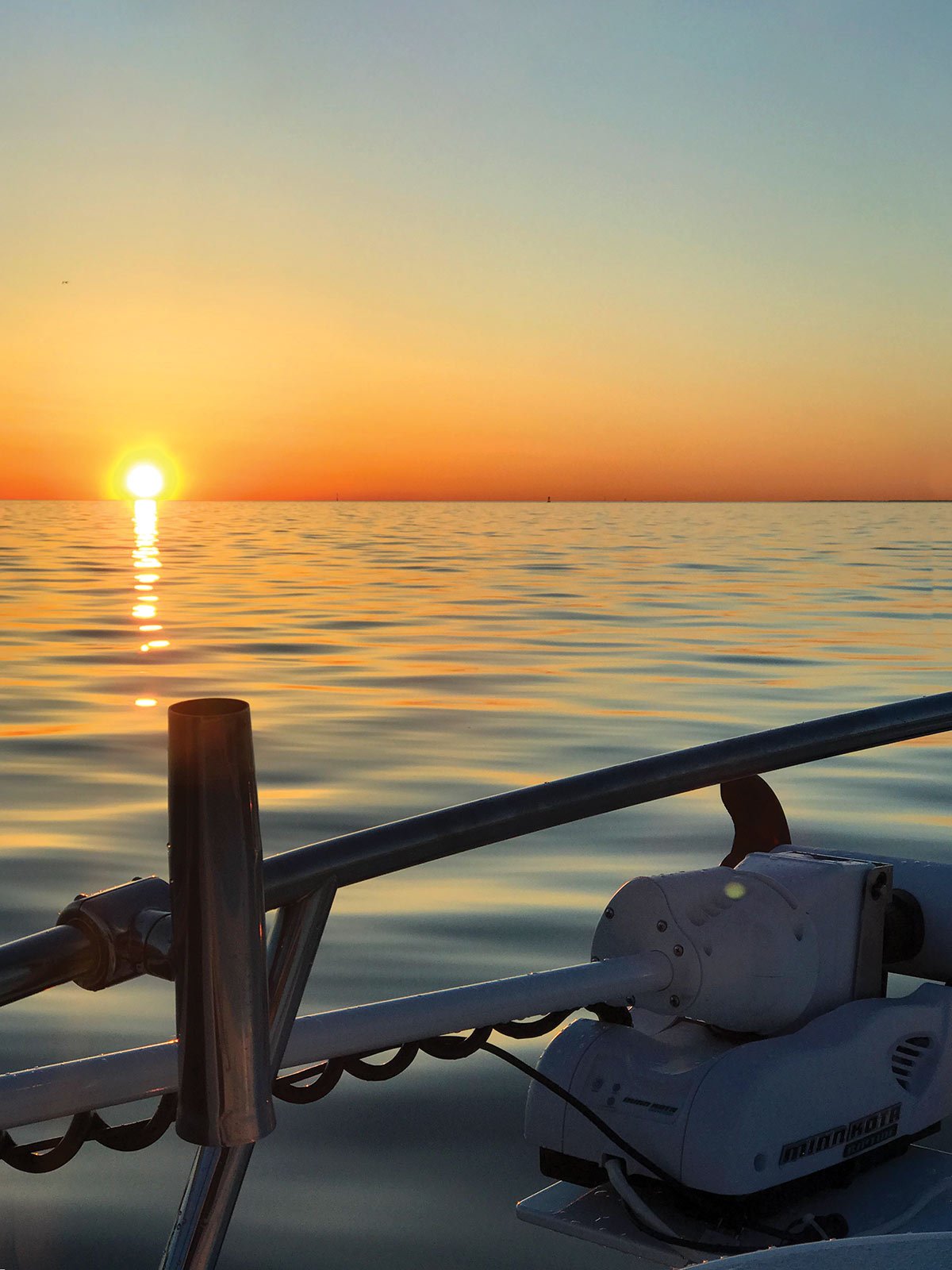
Back-trolling
Trolling can still be very effective, even if your boat is not outfitted with an electric motor and spot lock technology. Generations of fluke sharpies have been using their primary power plant to troll for fluke and enjoy their share of success. Today’s four-stroke outboards allow you to throttle down to the slow speeds often required without being concerned about fouling. Back-trolling with your engine in reverse is a good way to further reduce your trolling speed, or to maintain position along the edge of a productive drop-off or sandbar when fishing calm inshore waters.
Kicking your engine in and out of gear will keep your baits moving when wind against current conditions create little or no drift. On the flip side, when wind and current conspire to push you along too fast for an effective drift, a drift sock is a good first choice, but surprisingly few fluke fishermen take advantage of this practical tool that is available through most marine supply stores. In lieu of a drift sock, you can use your motor to stem the speed of your drift. The use of a motor also provides the advantage of being able to direct your drift along productive bottom.
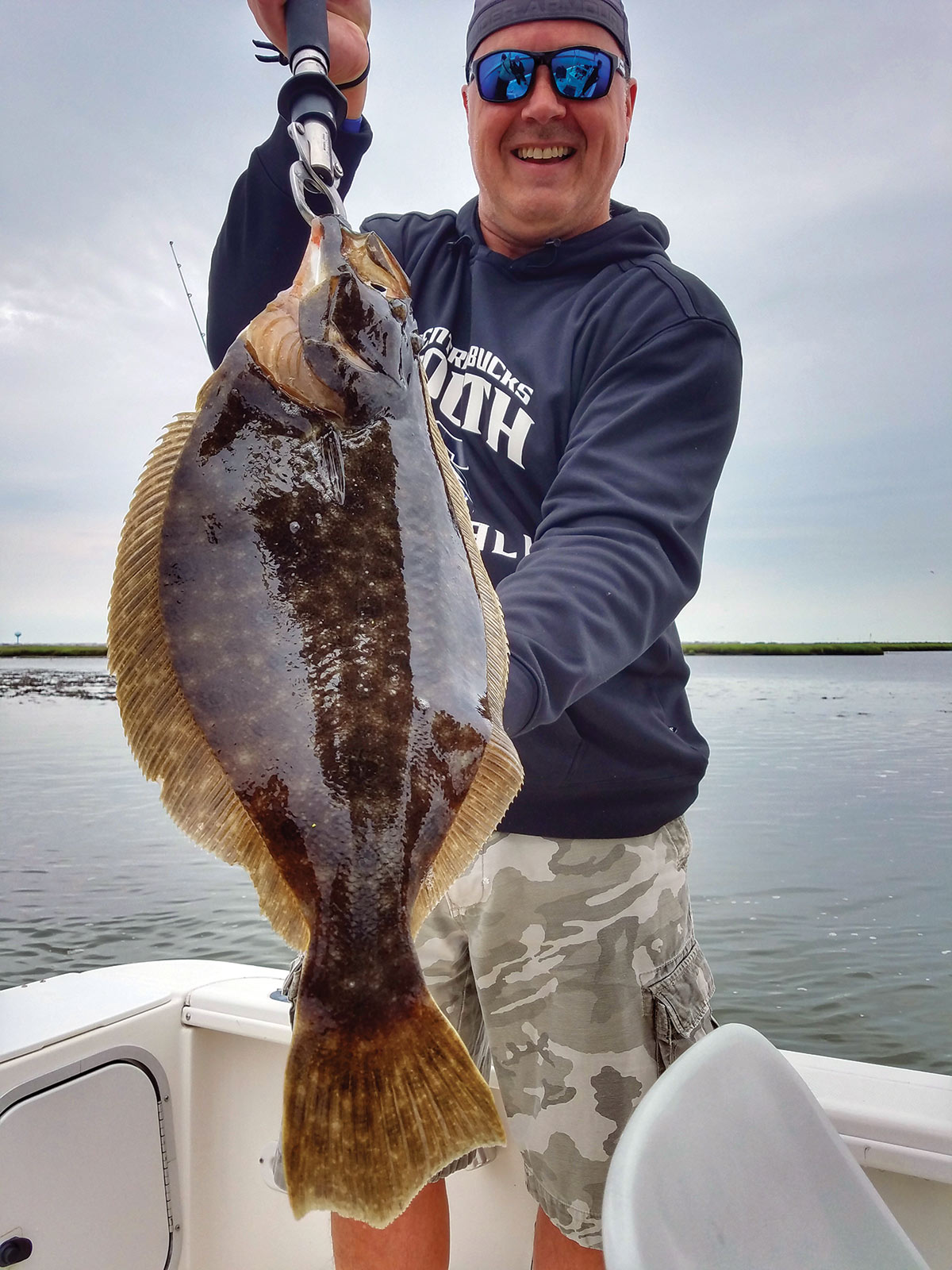
Here’s the KICKER
The reliability of today’s outboard engines has reduced the need for smaller auxiliary or emergency engines mounted on a bracket next to the main engine, but some small boat anglers still like the security provided by the extra engine. Others like it because you can troll all day on a gallon or two of gas, and idle down to slower speeds than you can with a large power plant.
One fluke sharpie who worked Long Island’s Fire Island Inlet on a regular basis from his 19-foot Aquasport, relied on a 10hp kicker to work the edges of the inlet’s sand bars and regularly caught more and bigger fluke than most other anglers who made long, uncalculated drifts over often barren bottom. He would hold his baitcasting rod in one hand, with the other hand on the tiller/throttle directing his drift over what he knew was good fluke holding water. One summer, he landed three double digit fluke that I knew of, while most anglers struggled to catch a few keepers. The fact that one of his favorite baits was fresh mackerel fillets likely entered into the equation as well, but his trolling prowess was certainly a key factor in his success.
Very much like the waters of Jamaica Bay and the Great South Bay along the South Shore of Long Island, South Jersey fluke fishing is synonymous with the sights and sounds of back bay marshes. Both Williams and Pontari choose a swath of water they believe will produce every trip. “Rather than drift across a channel opposing the currents, trolling allows me to drift along a certain side of the desired channel, essentially ‘mowing the lawn’ in a pattern until I locate the fish,” Williams said. “Starting on one side, then the middle and then the opposite side of the channel helps find them.”
In his New England home waters that include launching points such as West Point Harbor, MA and Newport, RI – much like the deep waters of Raritan Bay or Long Island Sound – Soares targets greater depths of 47 to 72 feet. “I work deep water, but when I come up on gullies and structure, then I try to stay in that area using the motor so I can cast around,” he said. “If I do drift over a patch of fish or structure that I want to fish harder, I’ll use the outboard to motor back up to the spot and then use the trolling motor to stay over the productive area. “There’s no need to drift hundreds of yards if you find a patch of fish to stay on,” the skipper added. “I use a variety of lures like the Tsunami fluke balls that I use in different sizes and use with strip baits,” Soares said. “Bluefish strips stored in scent are among my favorites.”
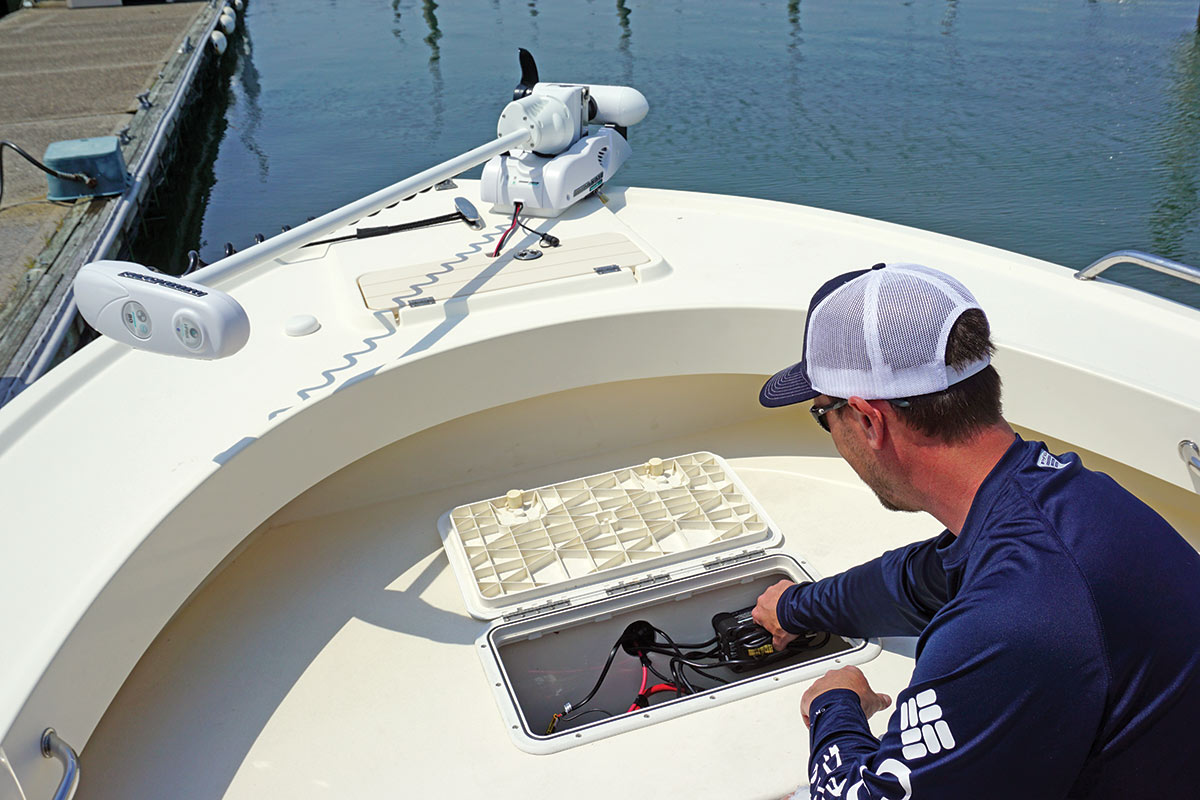
Conditional Approach
Captain Pontari talked about water temperature being a factor in where he starts on a given day. “In what is considered the early season, I start working in shallow water that averages 8 to 10 feet,” he said. “When the water temperature starts to get warmer in July, I’ll spend more time fishing the deeper channels.” Pontari prefers to propel the boat into the current subtly. “My magic boat speed is 1 mile per hour. I point the bow into the current, wind or tide and go against the flow trying to keep the lines straight up and down while bringing the bait slowly by the fish,” he said. “My first choice is wind against tide,” Pontari divulged. “It allows me to slowly present the baits just the right way.”
Pontari enthusiastically talked about how using his GPS, sounder, side scan option and motor in unison really helps his fishing. “I can fish the back side of a piece of concrete or a reef ball by working the trolling motor and using the side scan. It’s really impressive technology. I can fish precise spots or stay with clusters of fish,” he said.
When talking tech, Williams was equally as pumped. “I can’t stress enough for anglers to save their tracks on the GPS or plotter. This is the key in back-bay waters,” he stated. “Once fishermen map every square inch of bottom, they can make repeat passes over the most productive parts.
To my knowledge, none of these captains has ever met face-to-face, much less fished side-by-side, but they share a similar desire to catch more fluke utilizing their trolling techniques to lead the way.
| A HIGH TECH APPROACH: ELECTRONIC STEERING |
|---|
Recent developments in outboard technology designed to assist boaters with better maneuverability when docking can also be applied to your fishing. Yamaha’s Helm Master is one method of electronic steering without cables or hydraulics that allows captains to control twin or triple Yamaha outboards with a joystick which can move a boat in six lateral directions, making it a future game-changer on the fluke grounds. Evinrude’s iDOCK, is an Intelligent Piloting System controlled by a joystick that is compatible with twin Evinrude E-Tech G2 engines. Both systems can provide precise positioning when setting up a drift or making adjustments to work the edge of structure when targeting not only fluke, but other gamefish as well. While limited to these specific powerplants, it is a glance at what is coming down the road with broader applications that will surely aid the way we fish.
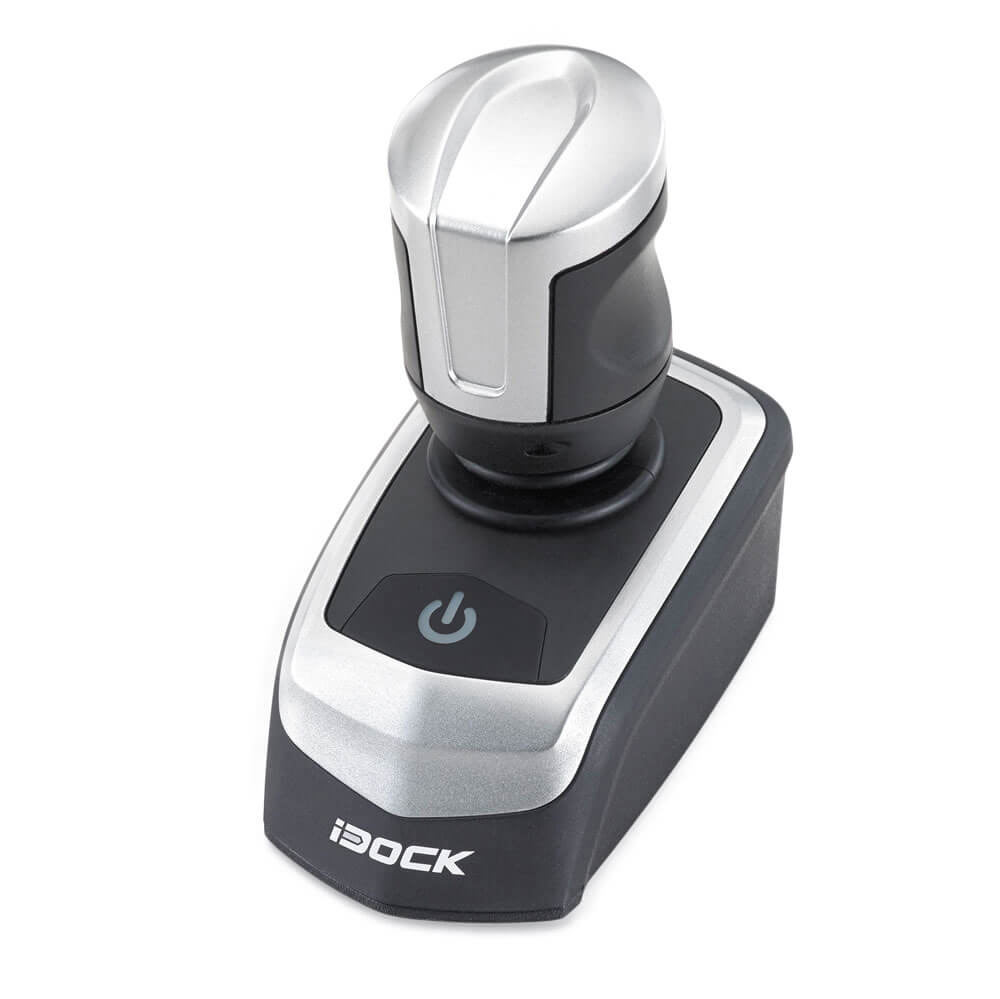
|

